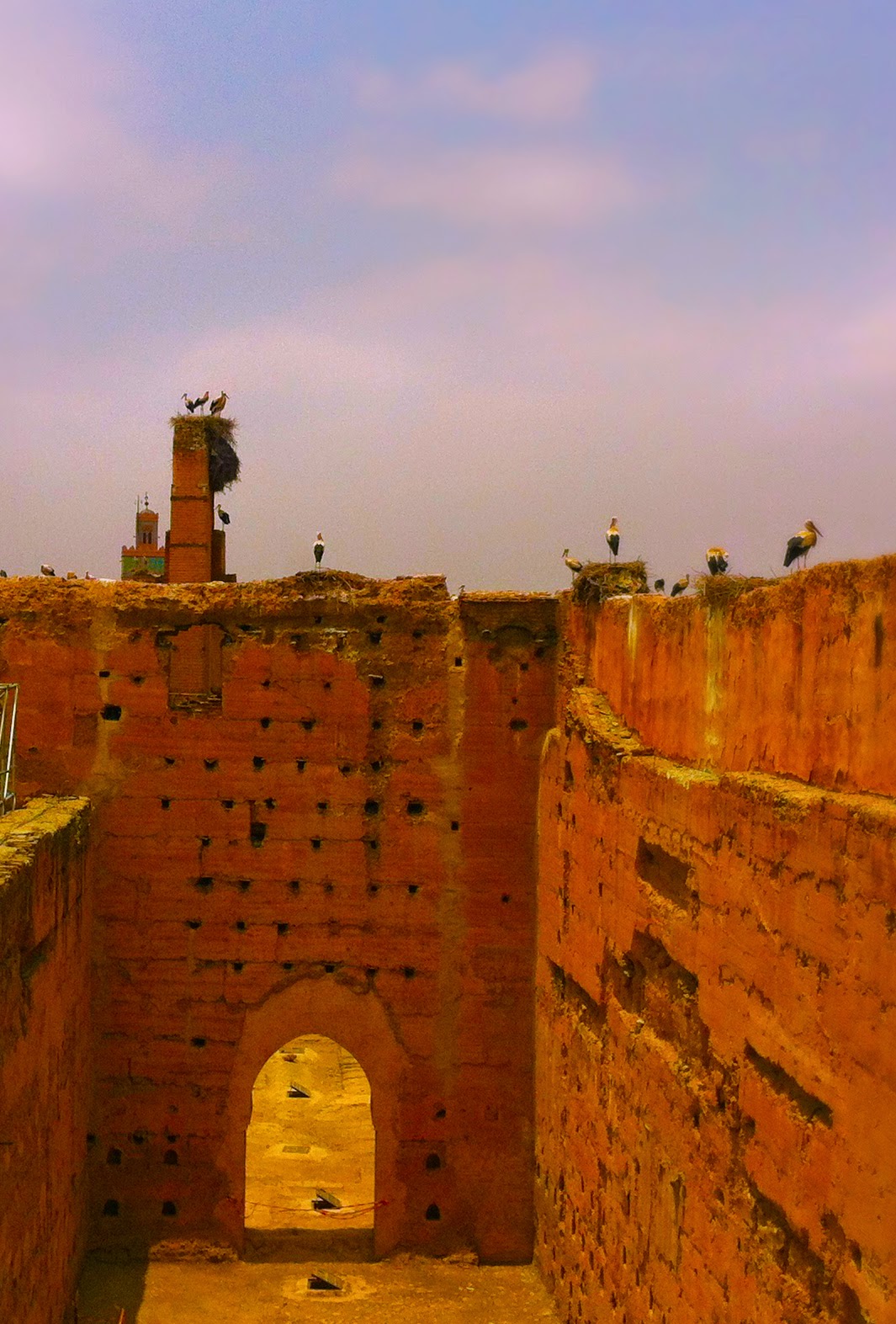El Badi Palace
El Badi Palace, now somewhat in ruins, was built in the 16th Century under Sultan Ahmad al-Mansur, who lavishly clad it in marble, gold and ivory. What we see nowadays is a palace stripped down to its bare skeleton, yet is still remarkably grand and beautiful.
Designed around a huge open courtyard with sunken gardens and a pool, the palace walls contain halls and meeting spaces. Whilst it was not designed for living but for entertaining, plenty of storks have now made its parapets their homes.
Nowadays, the palace is a tourist attraction, and holds the annual summer folklore festival; the reason for the stage scaffolding in the courtyard. The juxtaposition against this ancient backdrop is rather charming.
Two exhibitions located across from the entrance are free to enter and create a sense of intimacy where the vast vacant courtyard lacked. On display were photographs by photojournalist Don McCullin, and whilst unrelated to the palace itself, are relevant for their political expressions. I recommend checking out his work, it's really very moving:
McCullin Trailer from Jacqui Morris on Vimeo.
A dungeon is also housed within the walls of the palace. It is interesting to note the difference in scale, from grandness to near-claustrophobia. You can walk into individual prison cells via the long corridors, and it is quite meditative to go inside and think about how prisoners must have felt in their time. The floor space is roughly square, about big enough to sleep in. Light comes in through a high opening, and as a result so does sound. Perhaps sound-proofing isn't a prisoner's biggest problem, but imagine the sort of things they'd hear.
Jardin Majorelle
 |
| Cacti scar too. |
A stunning retreat from the sand-coloured visions that we were becoming accustomed to. This garden is the product of the artist Jacque's Marjoelle's love and dedication to creating a botanical haven, inspired by his years travelling.
A fun fashion-lover's surprise: the ashes of Yves Saint Laurent actually rest here, as this territory came under his ownership in 1980 until his death. It is said that the garden provided him a great deal of inspiration, no doubt.
The Berber Museum housed within is worth popping into. There isn't a great deal of information on the plaques accompanying artefacts, but most is self-explanatory.
Saadian Tombs
The Saadian tombs are home to members of the Saadi dynasty, housed within three interior spaces.
Whilst they're beautiful, what I found most interesting was the fact that they were actually only discovered a century ago after having been hidden away during the dynasty that followed the Saadians, as a means to protect them from being destroyed along with much of the architecture of that time. The entrances were blocked off, and it seems nobody questioned what lurked beyond. The tombs were eventually discovered from an aerial map, thank you aero-engineers.























